Reviews
Fritz Lang
Germany, 1919
Credits
Review by Lindsay Peters
Posted on 05 March 2014
Source
Categories Silent Lang
Until its discovery in a Dutch vault in 1987, Fritz Lang’s Harakiri was little more than a footnote in an unparalleled career. Previously, completist Lang scholarship had only made fleeting references to the film—newspaper reviews published in the wake of the film’s 1919 release served as the only source material for the film’s existence. Often credited as one of the first silent era films to aestheticize Oriental culture for a foreign audience, Harakiri displays unusual ethnographic attention to detail, apart from the presence of European actors in the lead roles. Harakiri is a reasonably faithful retelling of the classic Madame Butterfly story, with Lil Dagover in the titular role (here called O-Take-San), surrounded by a series of seemingly genuine Japanese extras. Lang and Dagover shot Harakiri in between the two Spider installments that would launch both their careers; the following year, Dagover would star as Jane Olsen in Robert Wiene’s The Cabinet of Dr. Caligari, before establishing an illustrious career on the German screen that would later render her Hitler’s favorite movie star.
The marriage between the beguiling maiden O-Take-San and visiting military officer Olaf Anderson is steeped in melodrama from the very beginning. Harakiri substitutes the officer’s original American background for one of European origin, perhaps in an effort to allow a German audience to readily identify with the central narrative conflict. As expected, O-Take-San’s fellow villagers and Olaf’s comrades in arms don’t take kindly to the interracial relationship. Olaf quickly returns to Europe, leaving behind a pregnant O-Take-San, who maintains a steadfast belief in his return. For years, O-Take-San refuses to give up her child for adoption, despite pressure from an intimidating Buddhist monk. Olaf eventually returns to Japan—with a new European wife at his side. Faced with the permanent loss of her husband, and the prospect of placing her child in the coveted two-parent household, O-Take-San plunges a dagger into her stomach (hara-kiri).
At first glance, the film adheres to a straightforward visual realism in a way that seemed decidedly anti-Lang for many critics. The relatively passive way in which Lang seems to conduct himself behind the camera may be attributed to the fact that this was the first screenplay he directed that was not his own, though Harakiri may in fact be the first instance of Lang’s career-long fixation with illegitimacy and identity, himself the product of an abandoned mother and an unknown father. However, the shot composition of Harakiri is not without its own subtle flourishes, which indicate a nascent visual style. Lang frequently relies on the standard iris shot to frame key moments, which include close-ups of Japanese flora as well as stolen glances between the doomed lovers. The iris shot becomes more than the closing punctuation to a scene, as was typical during the silent era—instead, Lang uses the technique to draw attention to the exotic embellishments that are the film’s ultimate strength. Lingering shots of cherry blossoms and paper lanterns emphasize the film’s fetishization of Japanese culture. Lang fills each shot with sumptuous silken costumes and screens so ornate you can almost see a glint of gold on the hand painted surfaces. As a result, the visual inventiveness found throughout the costume and set design takes precedence over the film’s formal and narrative realism.
Released the same year as Cecil B. DeMille’s deliriously opulent Male and Female, Harakiri is another example of the flourishing wave of cinematic exoticism and spectacular excess that began with the visual trickery of early cinema, and continued with the transformative powers of the narrative-based silent era. The highly saturated visual culture of the late nineteenth-century metropolis, where the bourgeoning consumer culture of department stores brought the promise of luxury and abundance into the context of the everyday, supplied both the fascination with material splendor evident in early cinema’s “aesthetic of opulence” and a means to showcase cinematic experiments in movement, light and colour. Loïe Fuller’s oft-copied serpentine dance and Segundo de Chomón’s 1907 trick film Métempsychosis exemplify the dazzling costume transformations found throughout the genre. These films demonstrate how the motifs that defined the aesthetic of opulence (butterflies, flowers, fans, costumes and ornamental interiors) could be used as a means of presenting color with a picturesque effect. In Harakiri, the emphasis on authenticity through the use of costumes and props provided by the German Ethnographic Museum suggests a simultaneous preoccupation with ethnographic realism in addition to a palpable fascination with exotic ornament. Ultimately, Harakiri is an early example of Lang’s expert ability to fuse his own visual mastery with mainstream realism when necessary; this ability to prioritize narrative over style would later become useful when Lang fled Europe in 1936 and began working within the Hollywood studio system. That said, Lang’s own stylistic reticence still feels like a missed opportunity in Harakiri—one can only imagine the cinematic gem - or beautiful train wreck - that the film could have been had Lang complemented the intricately detailed costume and set design with what would soon become his signature cinematic style of modernist grandeur.
More Silent Lang
-
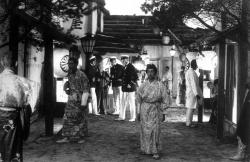
Harakiri
1919 -
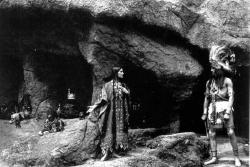
The Spiders
1919 -
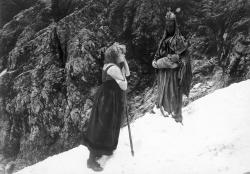
The Wandering Shadow
1920 -
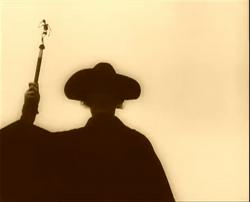
Destiny
1921 -

Four Around the Woman
1921 -
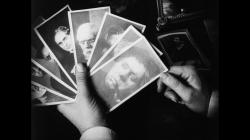
Dr. Mabuse the Gambler
1922 -

Die Nibelungen
1924 -

Metropolis
1927 -
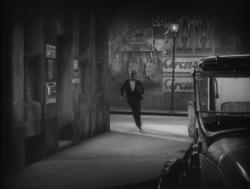
Spies
1928 -

Woman in the Moon
1929
We don’t do comments anymore, but you may contact us here or find us on Twitter or Facebook.



